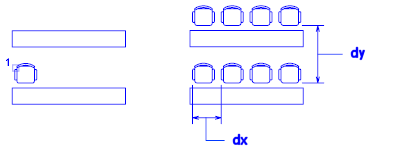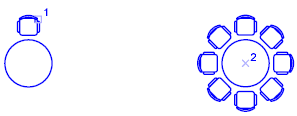|
||||||||||||||
|
Creating
an array of objects
|
||||||||||||||
|
||||||||||||||
|
||||||||||||||
|
Creating
an array of objects
|
||||||||||||||
|
||||||||||||||
It is possible to create copies of objects in a rectangular or polar (circular) pattern called an array.
For rectangular arrays, the number of Rows and columns can be controlled, as well as the distance between each one of them. For polar arrays, it is possible to control the number of copies of the object and their possible rotation. When creating many regularly spaced objects, arraying is faster than copying.

A rectangular array is built along a baseline defined by the rotation angle, which is entered in the appropriate dialog window.

When creating a polar array, the array is drawn counterclockwise or clockwise, depending on the positive or a negative value entered for the angle that has to be occupied by the array of objects. .

The radius of the array is determined by the distance from the specified center point to a reference point or to a base point on the last selected object. It is possible to use the default reference point (usually an arbitrary point that coincides with a snap point) or to specify a new base point to be used as the reference point.